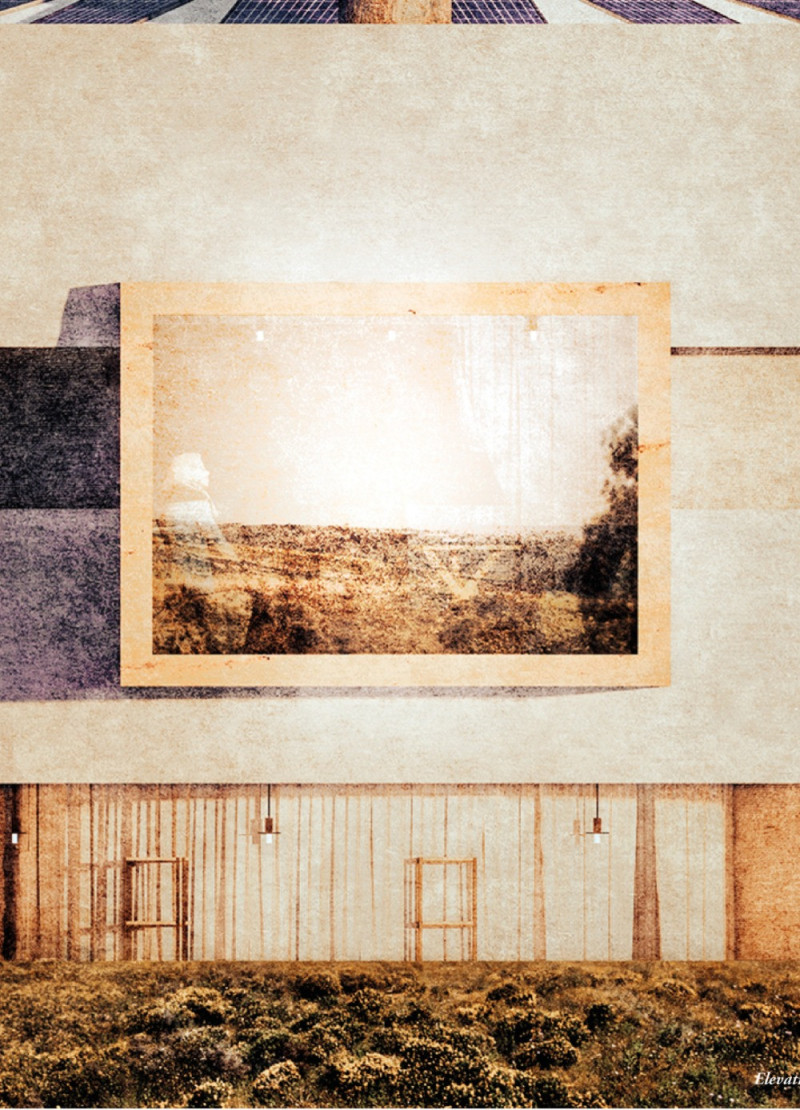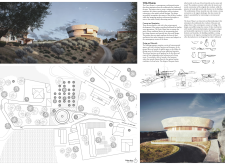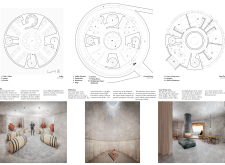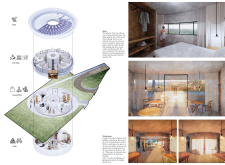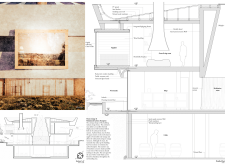5 key facts about this project
## Overview
Villa Oleário is located in a region renowned for its historical olive oil production, functioning as a guest house that enhances the relationship between visitors and the local landscape and cultural heritage. The design integrates natural materials and innovative spatial arrangements while prioritizing sustainable practices. The project's circular form is inspired by traditional olive crushers, establishing a contemporary interpretation that reflects both the historical context and modern architectural principles.
## Materiality and Environmental Stewardship
The project emphasizes the use of locally sourced, sustainable materials to minimize environmental impact. Sandstone forms the exterior walls, offering a textured aesthetic that harmonizes with the natural surroundings. Concrete is used for structural components, providing stability, while wood enhances the warmth of interior spaces through cladding and furnishings. Extensive glazing includes large, high-reflective windows that maximize natural light and views, further connecting interior environments with the external landscape.
In alignment with sustainable design principles, Villa Oleário features photovoltaic panels to meet its energy needs, aiming to achieve minimal carbon footprints. This approach reflects a commitment to environmental responsibility while enriching the guest experience through thoughtful engagement with natural resources. The layout promotes intuitive movement and incorporates communal spaces, such as an open dining area and a meditation room designed to foster introspection and connection to nature.


